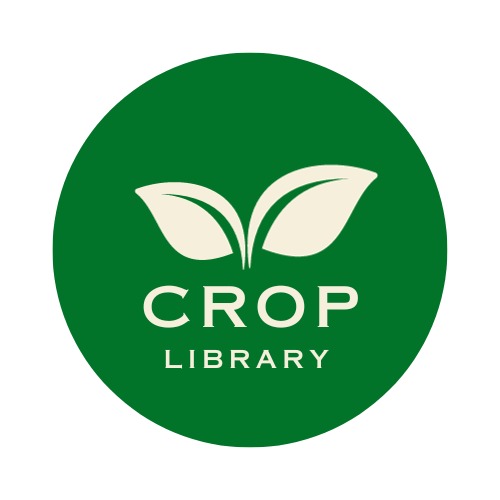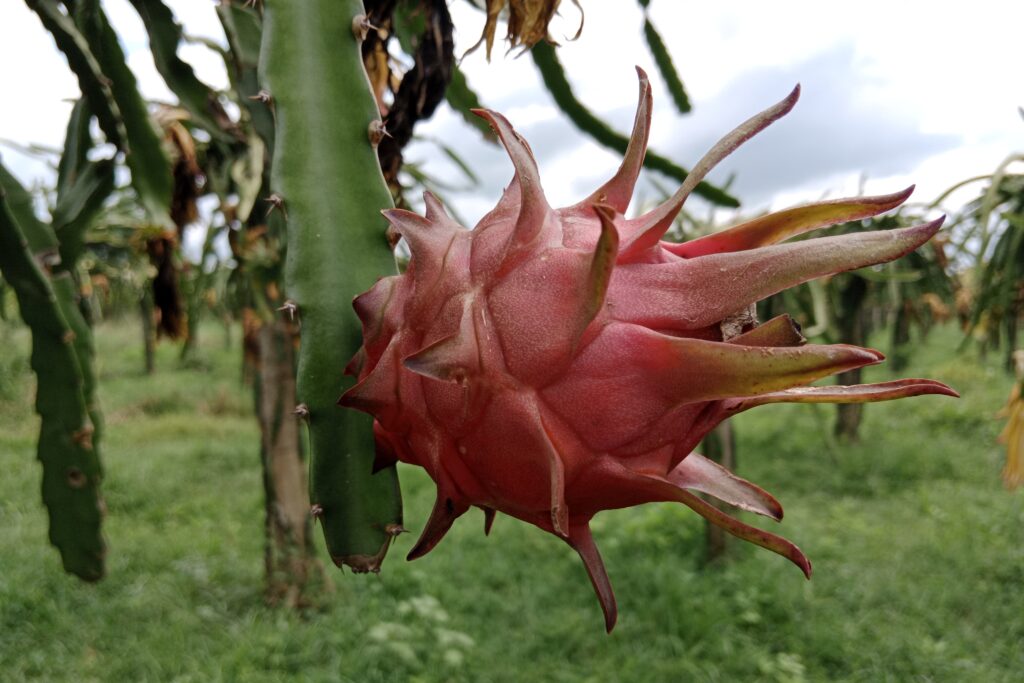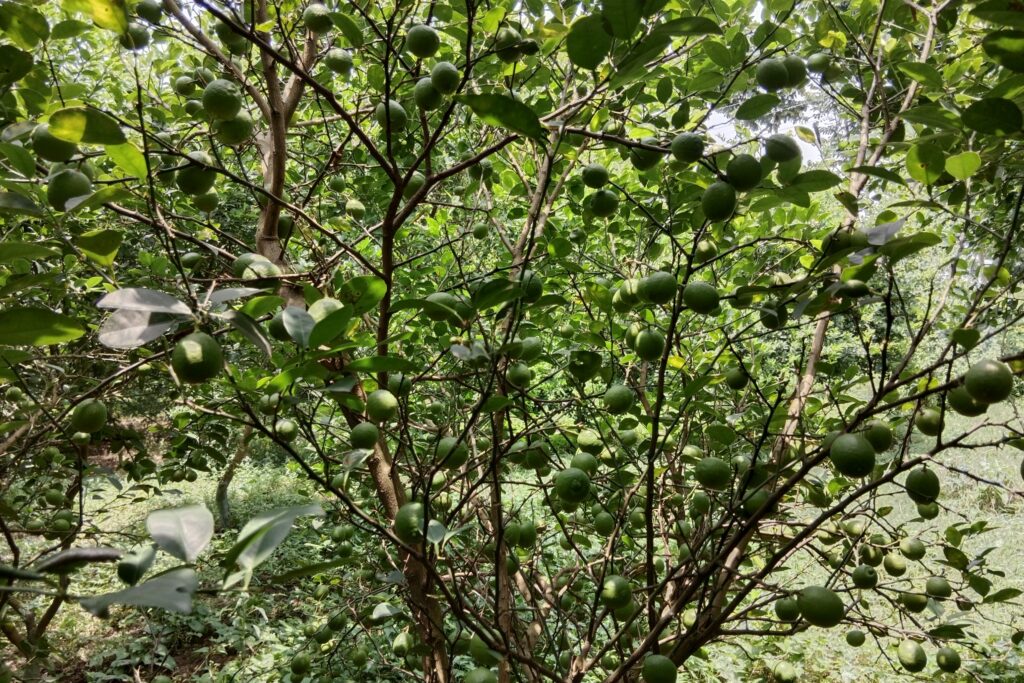Lepidoptera
One of the most diverse and ecologically significant groups of insects is the order Lepidoptera, which includes moths and butterflies. There are about 150,000 species known to exist worldwide, with 3,700 of those species occurring in Central Europe. Lepidoptera are widely studied and appreciated for their crucial role in pollination, complex wing patterns, and vivid colors. Their larval stages, especially the caterpillars, can seriously harm crops, which makes them a major problem in agriculture. The identification and management of Lepidoptera species, as well as their effects on agricultural productivity and ecological significance, are all covered in this blog.
Characteristics of Lepidoptera
Lepidoptera, a diverse order of insects that include butterflies and moths, are easily recognizable due to their distinctive morphological and functional traits. These characteristics not only make them unique among insect orders but also contribute to their ecological roles as pollinators and pests in agricultural systems.

i). Scales and Coloration
The defining feature of Lepidoptera is the dense coverage of scales on their wings and bodies. These minute scales, which resemble flattened hairs, are responsible for the vibrant and intricate color patterns seen in butterflies and moths. The term “Lepidoptera” itself is derived from the Greek words “lepidos” (scale) and “pteron” (wing), reflecting this characteristic. These patterns serve various purposes, including camouflage, warning predators, and facilitating mate recognition, highlighting the evolutionary significance of their coloration.
ii). Wings
Lepidoptera possess two pairs of broad wings, which play a vital role in their mobility and survival. Butterflies typically rest with their wings held vertically above their bodies, a posture that aids in predator avoidance and quick flight initiation. Moths, on the other hand, rest with their wings folded roof-like or laid flat against their bodies, providing effective camouflage in their habitats. The structural diversity of their wings is closely linked to their ecological niches and flight dynamics.
iii). Mouthparts
Adult Lepidoptera exhibit specialized suctorial mouthparts, primarily in the form of an elongated proboscis. This coiled feeding apparatus allows them to efficiently access nectar and pollen from flowers, establishing them as important pollinators in many ecosystems. When not feeding, the proboscis remains tightly coiled beneath the head, minimizing interference during flight. This adaptation underscores their role in maintaining plant-pollinator interactions while also providing energy for their activities.
Life Cycle of Lepidoptera
The four stages of the Lepidopteran life cycle are the egg, larva (caterpillar), pupa, and adult.
Larva (Caterpillars)
- Caterpillars are drum-shaped, soft-bodied, and often brightly colored with conspicuous appendages like spines or bristles.
- They have a heavily sclerotized head capsule, mandibulate mouthparts, and a labium equipped with a spinneret (a modified salivary gland used for producing silk).
- Caterpillars possess three pairs of thoracic legs and usually five pairs of prolegs on their abdominal segments.
- Most caterpillars are herbivorous and can cause significant damage to plants. They may feed freely on leaves, mine into plant tissues, or form galls.
Adults
- Adult butterflies and moths are primarily focused on reproduction. Their large, scaly wings and suctorial proboscis make them efficient fliers and feeders.
- They play a crucial role in pollination, as floral nectar and pollen serve as their main food sources.
Important Families of Lepidoptera with Examples
The order Lepidoptera is incredibly diverse, comprising numerous families, each with unique characteristics, behaviors, and ecological roles. Below is an overview of some of the most notable families, along with examples of their key species and their significance:

- Coccidae (Carpenter Moths, Goat Moths)
- Characteristics: These moths are known for their robust bodies and strong mandibles, which allow their larvae to bore into wood.
- Example: The Goat Moth (Cossus cossus) is a well-known species whose larvae tunnel into tree trunks, causing damage to timber.
- Aegeriidae (Clearwing Moths)
- Characteristics: These moths are named for their transparent wings, which lack the scales typical of most Lepidoptera. They are often mistaken for wasps due to their mimicry.
- Example: The Raspberry Clearwing (Pennisetia hylaeiformis) is a pest of raspberry plants, with larvae boring into the stems.
- Yponomeutidae (Ermine Moths)
- Characteristics: Small, whitish moths with well-developed proboscises. Their larvae are known for living gregariously in silk webs.
- Example: The Apple Ermine Moth (Yponomeuta malinellus) is a significant pest of apple trees, with larvae feeding on leaves and creating extensive webbing.
- Plutellidae (Diamondback Moths)
- Characteristics: Small moths with diamond-shaped patterns on their wings. Their larvae are notorious for their resistance to insecticides.
- Example: The Diamondback Moth (Plutella xylostella) is a major pest of cruciferous crops like cabbage and broccoli.
- Tortricidae (Leafroller Moths)
- Characteristics: These moths are named for their larvae’s habit of rolling leaves into shelters. They are highly polyphagous and can damage a wide range of plants.
- Example: The Codling Moth (Cydia pomonella) is a significant pest of apple and pear trees, with larvae tunneling into fruits.
- Pyralidae (Pyralid Moths, Snout Moths)
- Characteristics: These moths are characterized by their elongated snout-like mouthparts. Many species are agricultural pests.
- Example: The European Corn Borer (Ostrinia nubilalis) is a major pest of maize, with larvae boring into stems and ears.
- Noctuidae (Owlet Moths)
- Characteristics: One of the largest families of Lepidoptera, these moths are typically nocturnal and have stout bodies. Many species are crop pests.
- Example: The Armyworm (Spodoptera frugiperda) is a destructive pest of cereals and other crops, known for its voracious feeding habits.
- Geometridae (Loopers)
- Characteristics: Known for their distinctive larval movement, where they “loop” their bodies as they crawl. Adults often have slender bodies and broad wings.
- Example: The Cabbage Looper (Trichoplusia ni) is a common pest of vegetables, including cabbage and lettuce.
- Pieridae (Whites and Sulphurs)
- Characteristics: These butterflies are typically white, yellow, or orange in color. They are often migratory and feed on a variety of plants.
- Example: The Large White (Pieris brassicae) is a well-known pest of Brassica crops, with caterpillars feeding on leaves.
Ecological and Agricultural Significance
Some Lepidoptera species are well-known for their effects on agriculture, while many are appreciated for their beauty and pollination function. Some of the most economically devastating pests are found in families including Tortricidae, Pyralidae, and Noctuidae, which impact crops like cabbage, apples, and maize. Effective pest control and conservation initiatives depend on an understanding of these families’ traits and habits.
Also Read About: Beetles in Agriculture and its management
Notable Species and Their Impact
i). Mining Moths
- Apple Leafminer (Lyonetia clerkella): Larvae mine into apple leaves, causing significant damage.
- Horse Chestnut Leafminer (Cameraria ohridella): An invasive species first recorded in Germany in 1993, it now infests horse chestnut trees across Europe, leading to premature leaf fall.
ii). Ermine Moths (Yponomeuta spp.)
- Small, whitish moths with well-developed proboscises.
- Larvae live gregariously in silk webs and feed on leaves.
iii). Family Tortricidae (Leafroller Moths)
- Larvae feed on leaves and later mine into young apple fruits, causing early fruit drop.
iv). Family Pyralidae (Pyralid Moths, Snout Moths)
- The European Corn Borer (Ostrinia nubilalis) is a major pest of maize crops, with larvae mining into stems and inflorescences.
v). Family Pieridae (Whites and Sulphurs)
- The Large White (Pieris brassicae) is a common butterfly whose caterpillars feed on Brassicaceae and Papilionaceae plants. They are known for their ability to detoxify glucosinolates.
Management of Lepidoptera
Lepidoptera, particularly their larval stages (caterpillars), are known to cause significant damage to agricultural crops. These pests feed on leaves, stems, fruits, and other plant parts, leading to reduced yields and economic losses for farmers. To manage their populations effectively, a combination of control methods is employed. These strategies aim to minimize damage while ensuring environmental sustainability. Below is an in-depth look at the primary management approaches:

1.Chemical Control
Insecticides are used in chemical control to target and lower Lepidoptera populations. These substances are intended to interfere with the insects’ physiological functions, which will either kill or incapacitate them. The following are a few popular pesticides and how they work:
i). Pyrethroids
- Mode of Action: Pyrethroids work by keeping sodium channels open along the nerve axons, causing prolonged nerve stimulation. This leads to paralysis and a “knock-down” effect, where insects are rapidly immobilized.
- Example: Deltamethrin and Cypermethrin are widely used pyrethroids for controlling Lepidoptera pests.
ii) Indoxacarb
- Mode of Action: Indoxacarb stops nerve impulses from traveling through sodium channels in nerve cells. This causes the insect to cease feeding, which ultimately results in its demise.
- Indoxacarb, for instance, works well against pests such as the Diamondback Moth (Plutella xylostella).
iii). Thiacloprid
- Mode of Action: Thiacloprid is a neonicotinoid insecticide that disrupts the function of postsynaptic receptors in the nervous system. This interference causes paralysis and death.
- Example: Thiacloprid is used to control pests such as the Codling Moth (Cydia pomonella).
iv). Methoxyfenozide
- Mode of Action: Methoxyfenozide is an insect growth regulator that mimics the action of molting hormones. It causes premature and incomplete molting, leading to the death of larvae.
- Example: This insecticide is effective against pests like the Armyworm (Spodoptera frugiperda).
2.Biological Control
Biological control involves the use of natural enemies or biological agents to suppress Lepidoptera populations. This method is environmentally friendly and sustainable. Key approaches include:
i). Bacillus thuringiensis (Bt)
- This naturally occurring bacterium produces toxins that are fatal to larvae of Lepidoptera. Genetically engineered crops like Bt corn and Bt cotton, as well as biopesticides, make extensive use of Bt.
- Mode of Action: When larvae consume Bt toxins, the disruption of the intestinal lining causes hunger and death.
ii). Parasitoids
- Natural enemies like Trichogramma wasps parasitize Lepidoptera eggs, preventing them from hatching.
- Example: Trichogramma brassicaeis used to control pests like the European Corn Borer (Ostrinia nubilalis).
3. Biotechnical Control
Biotechnical methods leverage the behavior and biology of Lepidoptera to manage their populations. Examples include:
Sex Pheromones
- Synthetic pheromones are used to disrupt mating behavior. For instance, the “confusion method” involves releasing pheromones to prevent male moths from locating females, reducing reproduction rates.
- Example: This method is widely used in vineyards to control the Grapevine Moth (Lobesia botrana).
4. Cultural and Mechanical Control
These methods involve modifying farming practices or using physical barriers to reduce pest populations:
- Crop Rotation: Rotating crops disrupts the life cycle of Lepidoptera pests.
- Sanitation: Removing crop residues and weeds eliminates breeding sites.
- Traps: Light traps and pheromone traps are used to monitor and capture adult moths.
Ecological and Economic Importance of Lepidoptera
Lepidoptera, a diverse order of insects encompassing butterflies and moths, have a profound impact on ecosystems and agriculture. Their ecological roles are multifaceted, contributing to both the health of natural environments and posing challenges in agricultural systems. Their significance can be viewed from two primary perspectives: as pollinators and as pests.
1.Pollinators
Adult Lepidoptera, particularly moths and butterflies, are essential pollinators of a variety of plants. Both agricultural production and natural habitats are supported by this pollination activity:
i). Contribution to Biodiversity
Lepidoptera are key players in maintaining plant diversity. As they move between flowers, they transfer pollen, facilitating the reproductive success of numerous plant species. This process ensures the continued existence of many plants, including those that form the foundation of various ecosystems. By pollinating wildflowers, trees, and shrubs, they help preserve natural habitats that are home to other wildlife.
ii). Support for Agricultural Crops
Some crops, such as fruits, vegetables, and nuts, rely on Lepidoptera for effective pollination. The transfer of pollen by these insects boosts the yield and quality of these crops, directly benefiting agricultural productivity. In some areas, Lepidoptera can be the primary pollinators for certain crops, making them indispensable to food production.
iii). Pollination Efficiency
Lepidoptera are especially efficient pollinators due to their ability to visit a wide variety of flowers and their longer foraging periods, particularly in the evening or at night when other pollinators, like bees, may be inactive.
2.Pests
Despite their beneficial role as pollinators, many species of Lepidoptera, especially in their larval (caterpillar) stage, are significant pests in agriculture, leading to notable economic losses.
i). Damage to Crops
The larvae of several Lepidoptera species are notorious for their voracious feeding habits. They can damage a wide range of crops, including economically important ones like maize, apples, cabbage, and cotton.
- Maize: The larvae of species such as the Fall Armyworm (Spodoptera frugiperda) can cause extensive damage by feeding on maize leaves, stems, and kernels, leading to yield reductions and, in some cases, complete crop failure.
- Apples: Codling moth larvae (Cydia pomonella) bore into apple fruits, causing direct damage and making them more susceptible to secondary infections.
- Cabbage: The larvae of cabbage white butterflies (Pieris brassicae) consume the leaves of cruciferous plants, reducing both crop yield and quality.
ii). Economic Losses
The economic impact of Lepidoptera pests is significant, with farmers often spending large amounts on pesticides, crop protection measures, and management strategies to control their populations. Additionally, the presence of pests can lower the market value of affected crops, leading to financial losses in agriculture.
- Defoliation and Plant Damage: In many cases, the feeding behavior of caterpillars leads to the defoliation of plants, weakening their ability to photosynthesize and, in extreme cases, causing plant death. This can have cascading effects on food production and ecosystem stability.
Balancing Ecological Roles
The dual role of Lepidoptera as both pollinators and pests highlights the importance of managing their populations in a balanced manner. While controlling pest species is crucial to minimizing economic losses in agriculture, it is equally important to conserve and protect those Lepidoptera that are beneficial pollinators. Integrated pest management (IPM) strategies, which combine biological, cultural, and chemical control methods, are often employed to reduce the negative impact of pest species while supporting the pollination services that Lepidoptera provide.
Conclusion
The order Lepidoptera is a fascinating group of insects that captivates us with their beauty and complexity. From their intricate life cycles to their ecological roles and impact on agriculture, butterflies and moths are an integral part of our natural world. By understanding their biology and implementing sustainable control methods, we can protect both these remarkable insects and the crops they sometimes threaten.



Pingback: Identification and management of Diptera: Flies and Midges -
I’m pretty pleased to uncover this website.
I need to to thank you for your time for this particularly fantastic read!!
I definitely really liked every little bit of it and i
also have you saved to fav to see new things on your blog.
I have read a few just right stuff here. Certainly price bookmarking for
revisiting. I wonder how a lot effort you put to make such a excellent
informative web site.